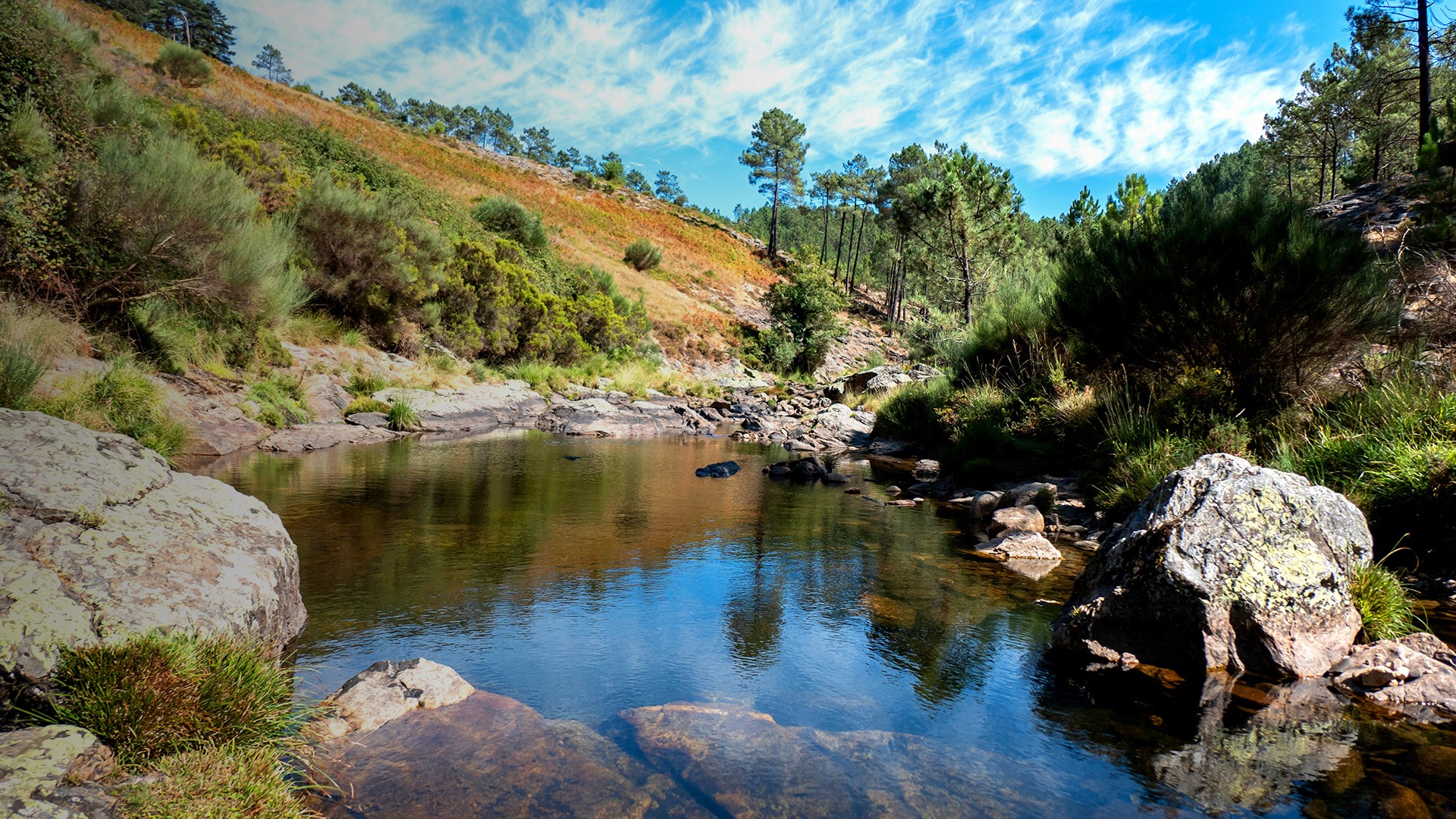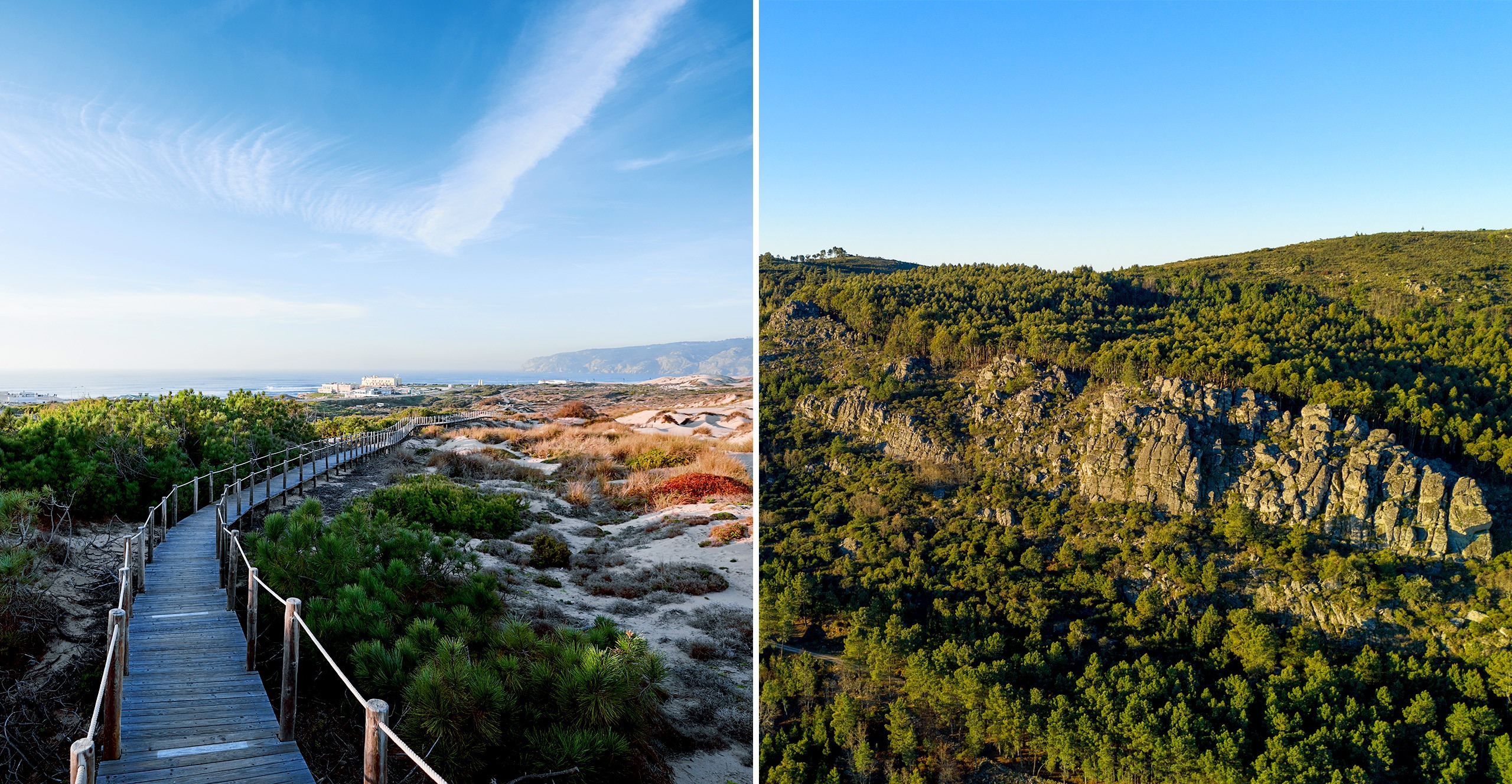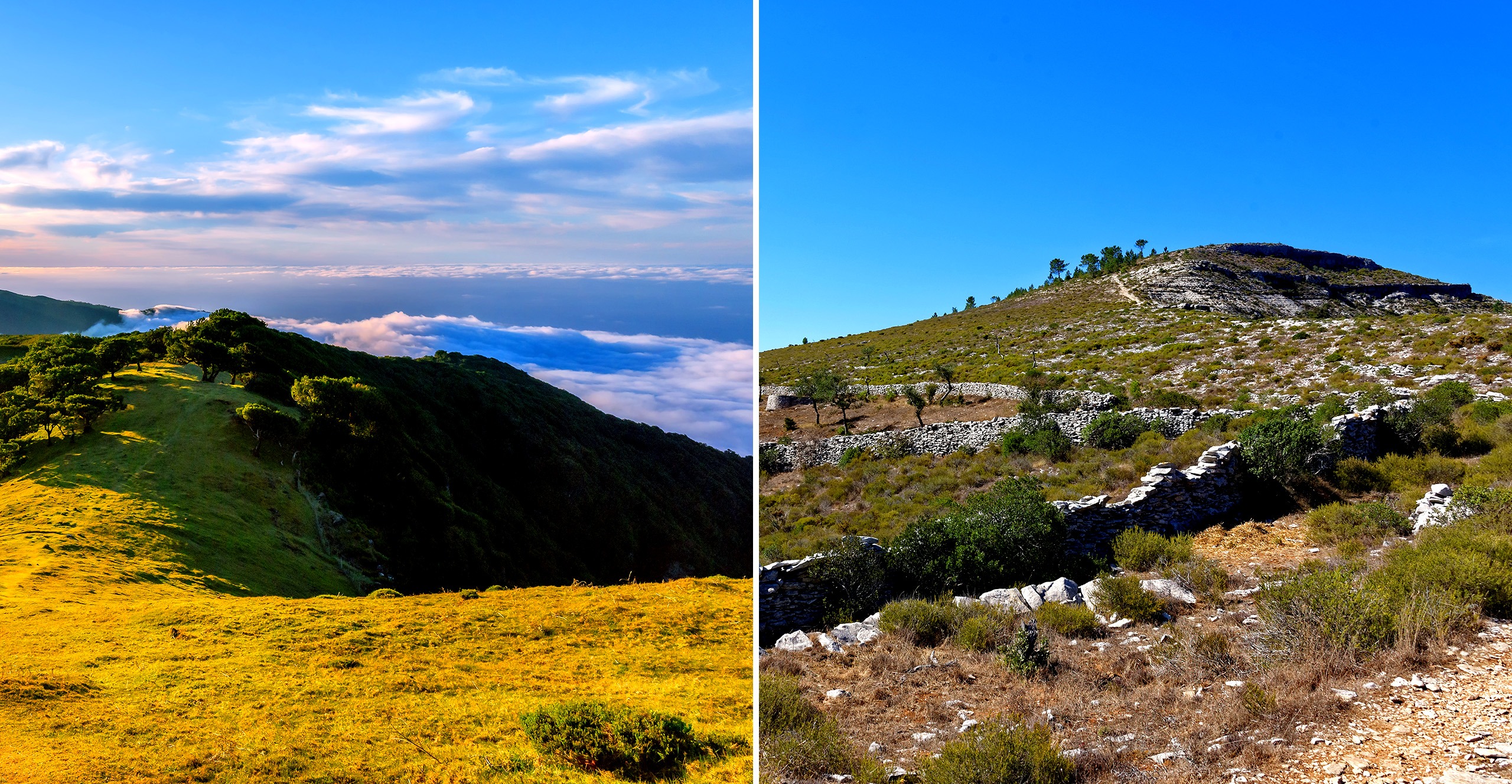Montesinho Natural Park
On the border with Spain, in the Upper Northeast of the Trás os Montes province, this park is located in the municipalities of Bragança and Vinhais, occupying more than 74 thousand hectares and the mountains of Montesinha and Coroa. This natural park features oak groves where the black oak (Quercus pyrenaica) is predominant, along with chestnut trees, riparian groves, assorted bushes, heather and cistus or rockroses. Due to the diversity of habitats in the mountain, we can find 110 species of nesting birds here such as the golden eagle (Aquila chrysaetus).
Learn more about the Montesinho Natural Park.
In the eastern Algarve, extending through the municipalities of Faro, Loulé, Olhão, Tavira and Vila Real de Santo António, the Ria Formosa Natural Park occupies 18,000 hectares of lagoon area. Dunes, marshes and forests are the three existing habitats in this park each of them with different types of vegetation and fauna. As for the flora, the beach thyme (Thymus carnosus) stands out, along with a psamophyte (that is, that occurs in dry and sandy places) endemic to Portugal, which can be found in the Alentejo and Algarve. In this park we can watch several species of migratory waterfowl, coming from northern Europe, such as the mallard (Anas platyrhynchos) and the Eurasian wigeon (Anas penelope), but also a colony of little egret (Egretta garzetta). This estuary is home to many species of fish, molluscs and crustaceans, and among its ichthyofauna (assorted fish species) of the park 65 species were identified. Another species worth mentioning: the chameleon (Chamaeleo chamaeleon), threatened with extinction and a species that occurs only on the eastern Algarve coast. The caiman or sultana chicken (Porphyrio porphyrio) is a species whose presence in Portugal occurs only in the Ria Formosa. This is why this endangered species was chosen as the symbol of this park.
Learn more about the Ria Formosa Natural Park.
Serra da Estrela Natural Park
Occupying much of the Estrela massif and the municipalities of Celorico da Beira, Covilhã, Gouveia, Guarda, Manteigas and Seia, this natural park extends over 89 thousand hectares. In its extension are lagoons, grasslands high up, peatlands, oak groves, chestnut groves and evergreen oak groves. Here endemisms of the Serra da Estrela can be seen, such as Festuca henriquesii, Leontodon pyrenaicus subsp. herminicus and Ranunculus abnormis and others, rare, such as Alchemilla transiens and Gentiana lutea. As for the fauna, it differs depending on the environment in which it occurs: rural (such as the common buzzard, the mole or the hare), forest (such as the genet, the bush owl or the horseshoe whip snake), shrubby (such as the badger, the wren or the midwife frog), subalpine (such as the mountain gecko, the red-billed chough or the Eurasian eagle owl) and water courses (such as the white-throated dipper, the water mole or the kingfisher).
Learn more about the Serra da Estrela Natural Park.
Natural Park of Serra de S. Mamede
In the territory of the municipalities of Arronches, Castelo de Vide, Marvão and Portalegre, the Natural Park of Serra de S. Mamede occupies more than 56 thousand hectares. Its symbol is the Bonelli’s eagle, a prey that nests on the cliffs of this mountain range. In it we can see oak groves, chestnut groves, cork oaks and evergreen oaks, assorted shrubs, rockroses, proof of the Atlantic and Mediterranean influence of this area. 800 flower species have been identified here. The distinct habitats that are created to the north and west and the south and east are conducive to the existence of birds (150 species identified by the Atlas of Birds of the Natural Park), such as the griffon (Gyps fulvus) and the black vulture (Aegypius monachus) and bat colonies, but also amphibians and reptiles (such as the waterlizard (Lacertashreiberi), the Iberian midwife frog (Alytescisternasii), distributed by sclerophyllous forests (adapted to the dry climate), natural and semi-natural herbaceous formations, rocky habitats and caves and forests, especially the black oak (Quercus pyrenaica).
Learn more about the Serra de S. Mamede Natural Park.
Natural Park of Serras de Aire and Candeeiros
The Natural Park of Serras de Aire and Candeeiros, located in the municipalities of Alcobaça, Porto de Mós, Alcanena, Santarém, Torres Novas and Ourém, covers more than 38 thousand hectares, based on the limestone mountains of the centre of the country. The symbol of the park is the bat, a cave species that has in this Protected Area 18 identified species. In the park, there are several habitats, including some priority habitats, such as 3170 – Mediterranean temporary ponds, 5230 – Arborescent shrublands of Laurus nobilis or 6110 – Limestone rupicolous meadows or basophils of the Alysso-Sedion albi.
Learn more about the Natural Park of Serras de Aire and Candeeiros.





